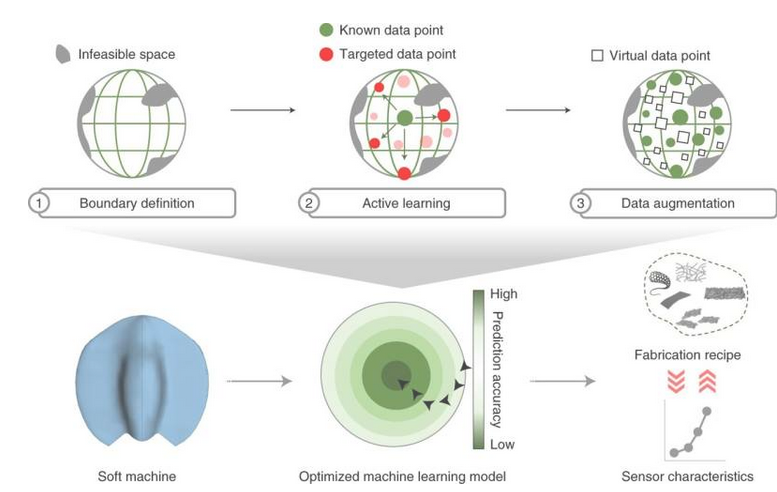
Soft robots are flexible and adaptable
31. Januar 2022Soft robots are flexible and adaptable
New York, Jan. 31, 2022
Soft machines – a subcategory of robotics that use deformable materials instead of rigid joints – are an emerging technology commonly used in wearable robotics and biomimetics (e.g., prosthetics). Soft robots offer remarkable flexibility, excellent adaptability, and uniform force distribution, making human-machine interaction safer than with conventional hard and rigid robots.
An essential component of soft machines is the high-precision strain sensor to monitor the strain changes of each soft body unit and achieve a high-precision control loop, with several new challenges to overcome:
First, the complex motions of soft machines require strain sensors to monitor a wide strain range from <5% to >200%, which is beyond the capabilities of conventional strain sensors.
Second, monitoring the coordinated motions of a soft machine requires multiple strain sensors to perform the different sensing tasks for separate robotic units, which requires lengthy trial-and-error testing.
To circumvent this problem, a University of Maryland (UMD) research team led by Po-Yen Chen – a professor of chemical and biomolecular engineering at UMD with a dual appointment at the Maryland Robotics Center – has developed a machine learning (ML) method to facilitate the creation of a predictive model that can be used to perform design tasks in two directions: (1) predicting sensor performance based on a manufacturing recipe and (2) recommending feasible manufacturing recipes for suitable strain sensors. In short, the group has developed machine intelligence that accelerates soft machine design.
„What we’ve essentially created is high-precision prediction software based on a machine-learning system that is capable of designing a wide range of strain sensors that can be integrated into various soft machines,“ Chen said. „To use a food analogy: We give a ‚chef‘ a list of ingredients, and that chef is able to create the perfect dish based on the customer’s individual tastes.“
This technology can be used in advanced manufacturing, underwater robotic design, prosthetic design and beyond.
This study was published in Nature Machine Intelligence on January 26, 2022. To learn more about Dr. Chen’s work, please visit the group’s website.
More information: Haitao Yang et al, Automatic strain sensor design via active learning and data augmentation for soft machines, Nature Machine Intelligence (2022). DOI: 10.1038/s42256-021-00434-8


